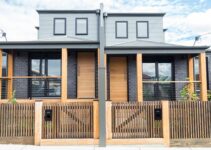Singapore’s real estate market is a dynamic and often misunderstood sector. This blog post sheds light on the intricacies of real estate prices in Singapore, offering readers a clearer understanding and valuable insights.
Page Contents
Unveiling the Dynamics of Singapore Real Estate Prices
The real estate landscape in Singapore is characterized by its resilience and consistent growth. Prices reflect a blend of local demand, economic stability, and foreign investment interest.
The market’s complexity is driven by Singapore’s limited land availability, making it a unique case study in urban development and property management.
Factors Driving Singapore’s Real Estate Market

Source: sbr.com.sg
Several key factors influence Singapore’s real estate market. These include economic growth, population density, and foreign investment policies. Additionally, the local government’s active role in housing policies and development projects significantly impacts property values.
Understanding these elements is crucial for anyone looking to navigate the Singapore real estate sector effectively.
Dispelling Common Misconceptions About Property Values
Contrary to popular belief, Singapore’s property market is not solely driven by luxury real estate such as The Continuum and foreign investors. Affordable housing options exist, thanks to the government’s Housing Development Board (HDB) flats, which cater to a wide segment of the population.
The market’s diversity offers opportunities for various income levels, challenging the myth of exclusivity.
Analyzing Trends: How Real Estate Prices Fluctuate in Singapore
Real estate prices in Singapore show a trend of cyclical fluctuations influenced by global economic conditions, local demand-supply imbalances, and policy changes.
Analyzing these trends reveals patterns of growth and correction phases, providing insights into future market directions. Such analysis is essential for potential buyers and investors to make informed decisions.
Understanding the Role of Government Policies in Real Estate Prices

Source: investopedia.com
Government policies play a pivotal role in shaping Singapore’s property prices. Initiatives like the Additional Buyer’s Stamp Duty (ABSD) and the Total Debt Servicing Ratio (TDSR) framework are designed to maintain a stable and sustainable property market.
These regulations ensure that the market remains accessible to Singaporeans while curbing excessive speculation.
Affordability remains a significant challenge in Singapore’s property market. The high cost of living and stringent loan requirements can make homeownership daunting.
However, government subsidies for first-time buyers and grants for resale flats are mechanisms in place to aid affordability, demonstrating the state’s commitment to accessible housing for all citizens.
Strategies for Making Informed Decisions in Singapore’s Property Sector
Making informed decisions in Singapore’s real estate sector requires a comprehensive understanding of market trends, regulatory impacts, and financial planning.
Prospective buyers should conduct thorough research, consider long-term investment horizons, and seek professional advice. Staying informed about policy changes and market dynamics is crucial for navigating the complexities of the Singapore real estate market.
Conclusion

Source: dreamstime.com
In conclusion, the real estate market in Singapore is intricate, influenced by a myriad of factors including government policies, economic conditions, and societal needs.
By debunking common myths, understanding market drivers, and considering the impact of government interventions, individuals can better navigate the challenges and opportunities within Singapore’s property sector.





